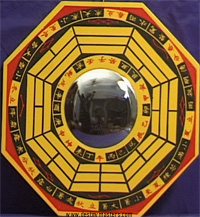|
Vedas
are the basic religious scriptures upon which the
tradition of Indian-theism is based. These four
Vedas i.e. Rigveda, Samaveda, Yajurveda and
Atharvaveda contains all the knowledge of this
universe and they are well preserved in it. The
Vedic sages, for the benediction of human beings
condensed this vast expansion of learning into
cryptic form. Their pupils who were of sharp
intellect memorized them as soon as these words of
great knowledge were pronounced by them (sages).
But
in due course of time sue to gradual depreciation
in the ability of memorizing, it became
problematic to preserve these invaluable learning.
To solve this problem the learned and
knowledgeable persons devised means to preserve it
by categorizing Vedas into six divisions which
were known as ?Vedanga? (Vedas? organ) and by
writing it down in the form of numerous authentic
volumes on diverse subjects.
This tradition resulted into the creation of
numerous volumes of diverse subjects like
Upanishad Philosophy, code of law, Auyurveda,
Astrology, Dhanurveda (art of archery),
Gandharvaveda, Aranyaka and Vedangas which were
divided into six parts which are:
1) Shiksha- education. 2)Kalpa- rituals.
3) Vyaakaran- grammar.
4) Nirukta- exposition of the Vedas. 5) Jyotish-
Astrology. 6) Chhanda- Meter or stanza.
In
the Smritis (code of law), instructions have been
given regarding religious cum moral behaviour of a
man, in great details. These ?Smritis? have
touched nearly every important aspects of human
life like conduct, behaviour, education and his
duty of seeking happiness inn the other world
after his death by being virtuous.
The experienced sages of these Vedic knowledge
have transformed the Vedic principles into most
practical forms in the Smritis and which they
thought must be the objective of the Smritis. Even
the most learned man having the knowledge of
Brahma, spiritualism and philosophy gets respect
from people only when he practices what he
preaches otherwise his tremendous knowledge is
covered by the darkness of his bad conducts.
So it should be an endeavour of each man to make
his life virtuous by following the teachings of
these Smritis- the message of the Vedas.
SUBJECT
DIVISION OF CODES OF CONDUCT
The
learned men of religion have tried to categorize
the scriptures of code of conduct mainly into
three categories.
- Codes of Conduct
(Aaachaar Samhita)
- Codes of
behaviour (Vyavahara Samhita)
- Codes of
atonement (Praayaschita Samhita) Or Codes of
punishment (Danda Samhita)
All
these three aspects are very essential for a
worthwhile existence of a man. If any of the
aspect is absent then the all round development of
a man not only gets blocked but also becomes
impossible. Keeping this in mind the ancient sages
of India preserved their memoirs, their
conclusions in the form of code of conduct for the
welfare of mankind stressing upon the importance
of religion and salvation and his continuous
endeavour in that direction.
CODES OF
CONDUCT
The
first demonstration made in the Smritis is related
with the right conduct of a man. The spiritual
development of a man depends upon the
implementation of the sixteen rites, wherein he is
required to maintain his life style pure virtuous
since his birth till his death by keeping away
from sinful activities.
Therefore for an achievement of bright future,
ordinances have been made for different ceremonies
and rites for different situations like
conception, initiation into learning, sacred
thread ceremony (yagyapavit), marriage etc which
brings respectability to a man and which helps him
to develop real humanity in him.
Although the education on the codes of conduct as
directed in the Smritis had been originally
categorized on the basis of the four castes i.e.
Brahmin, Kshatriya, Vaishya and Shudra and
similarly on the four stages of man?s life i.e.
Brahmacharya (maintaining celibacy), Grihastha (a
householder?s life), Vaanaprastha (going to the
forest) and Sanyaas (renunciaton) but today in the
Kaliyuga when the caste system has deteriorated to
such an extent that there is a fear of it becoming
extinct is not applicable.
The permission has been given in the ?Smritis? to
each individual and community according to his
tendency, capability and efficiency so that a man
can develop physically, mentally, intellectually
and the whole society moves forward on the path of
virtuosity.The two of the most important
duties of a Brahmin as described in the Smritis
are a) Penance. b) Learning and acquiring
knowledge.
A Brahmin by doing a penance liberates himself
from all of his sins and by acquiring knowledge,
he achieves the supreme status. The areas of
activities where a Brahmin is supposed to function
are learning, teaching and help in the performance
of Yagya. (sacrificial fire) Similarly the
Kshatriyas have been ordered to rule efficiently
and protect his subjects. Vaishyas have been asked
to accumulate the means and the commodities so as
to earn money. The Shudras have been asked to be
at the service of all the above mentioned castes.
The reason for such a direction being given to
Shudras are because Shudras are full of dark
qualities and many faults are found in them
connected with physical being and mental being.
For example sage
Apasthamba has said ?
AGYAANTIMIRAANDHASYA MADDYAPAANASTASYA CHA
||
RUDHIRAM TEN SHUDRAANNAM VIDHIMANTRA VIVARJITAM ||
MEANING - Since a Shudra is
brought up in the environment of ignorance and
darkness, always under the influence of
intoxication, hence the food of a Shudra is worth
abandoning in the same way as blood is abhorred.
CODES OF BEHAVIOUR :
The
second subject which is ascertained in the Smritis
is the code of behaviour. Man being a social being
comes daily into contact with various people
according to his requirements. In these processes
of contacts, there are times when activities are
not properly conducted either because of ignorance
or because of selfishness. As a result of this
difference of opinions develop in the society and
the atmosphere gets vitiated.
To prevent this from happening the creators of
Smritis have directed the kings, administrators to
bring those corrupt people back to the path of
virtuosity by punishing them for their
crimes.According to sage Yagyavalkya, the chief
deity of the king is look after the welfare and
the safety of his subjects and to take appropriate
measures in that regard. For this to happen he
must ensure that his subjects follow the path of
virtuosity and punish those wicked people who
cause hindrances and obstructions in the path of
virtuous people by tormenting them.
And then this can happen only when the king is
religious, fearless, alert, treats all as equal
and keeps courtiers having such qualities too.The
subjects are like children to a king, so it is his
duty to look after their welfare just like a
father looks after the welfare of his sons.
CODE OF
ATONEMENT :
The
third chief subject which is ascertained in the
Smritis or codes of conduct in codes of atonement.
It is natural for a man to commit mistakes
knowingly or unknowingly for which he feels sorry
later on. To undo his sins and to attain peace of
mind he wants to perform some virtuous activities.
The third chapter of the Smritis deals with such
virtuous activities by the performance of which a
man alone can atone for his sinful activities. The
different forms of sinful activities and their
methods of atonement are elaborated in detail in
this chapter for example sin committed by lust, by
anger, by ignorance and by greed.
Since the initial phase of the civilization there
have been provisions for royal punishment for sins
and crimes committed in society. But such ?mental
crimes? of which others are ignorant and only the
commiter has knowledge, the Smritis have approved
of mental atonement as the means to be free from
his guilt consciousness. A sinner whose conscience
does not allow him to rest in peace and who is
always fearful of divine punishment for his sins
makes his life a hell.
Many Smritis have considered charity and Dakshina
(giving alms) as the means for the atonement of
his sins. But for the personification of penance,
Sage Atri and Sage Baudhyan have considered ?Pranayam?
and the chanting of various mantras as the only
means for the atonement of sins.
Smritis have bestowed upon the Brahmins the right
to make judgements regarding religion and
virtuosity. It has also burdened them with the
severe rules of atonement in case of their
committing a sin.The rules of atonement are not
that severe for a person belonging to other
castes. For example a Kshatriya has to atone half
as compared to a Brahmin, a Vaishya has to atone
one third as compared to a Brahmin and a Shudra
has to atone for only one fourth as compared to a
Brahmin.
EVOLUTION OF SMRITIS :
The
origin and development of Smritis blossomed after
the Vedas and Vedangas. Smritis which were created
after the Vedic literature contain some serious
topics as well as many preaching in simple
language. As a result of this simple language
common people have been able to gain knowledge
about their rights and duties.
It is said that a phase came after the Vedic
period which could be called the Smriti period
because during that period the society was
governed by the rules contained in the Smritis.
During that period many Smritis were created apart
from the main Smritis, keeping in mind the
prevalent social and environmental conditions in
which there is found great diversities in the
rules although the basic principles remained the
same.
THE NAMES OF
SMRITIS :
Since
the Smritis normally contain the preaching and
commands of great ancient sages therefore they are
aptly named after them. According to sage
Yagyavalkya the following names of twenty sages
have been given in his Smriti and they are also
considered as the most prominent creators of the
Smritis.
They are:
1) Manu 2) Atri 3) Vishnu 4) Haarit 5)
Yagyavalkya 6) Ushanaa 7) Angira 8) Yama
9) Aapasthamba 10) Samvarta 11) Kaatyaayan 12)
Vrihaspati 13) Paraashar
14) Vyaasa 15) Shankh16) Likhit 17) Daksha 18)
Gautam
19) Shaataatap 20) Vashishtha.
It is only the Smritis which teach us as to which
religious activity is essential in a particular
situation? Or which activity is of secondary
importance? Or which activity is worth
abandoning?It also determines how far a man can go
in search of sensual pleasure and how important is
purity and sanctity in our life. A clear
demarcation in the above-mentioned things, though
appears harsh and strict yet it helps in building
a religious and virtuous society by creating an
atmosphere of similarity, equality and
tranquility.
Apart from the basic religious overtones the
Smritis also contain preaching on good manners.
The golden period of Indian history was when the
conduct of the people followed the preaching of
the Smritis. During that time, India because of
her supreme civilization and culture was famous
and was respected by the whole world. So we
Indians must try to follow the preaching of the
Smritis so that our past glory is brought back.
Apart from the above mentioned twenty Smritis,
there is also a mention of other Smritis in the
scriptures. Recently an organization by the name
of ?Guru-Mandal? of Calcutt had published the
names of ten Smritis, they are 1)
Markandeya 2) Sangakshi 3) Baudhyan 4)
Laghwashwalayan 5) Kapil 6) Baghul 7) Vsihwamitra
8) Shandilya 9) Kanva 10) Bharadwaja all of which
are famous for their goodness and glory.
P.V. Kane who is the author of ?History of
religious scriptures? has given the name of fifty
Smritis which are as under:
|



